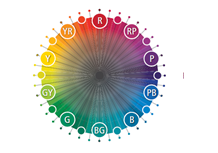In textile production, the journey from raw fabric to a market-ready material involves multiple finishing steps that refine its look, feel, and functional properties. One of the most prominent mechanical finishing techniques is calendering, a process that uses heat and pressure to transform the surface of the fabric, giving it a smoother touch, improved shine, and better drape.

Figure-1: Calendaring machine.
Source: Texile learner.
Definition of calendaring process:
The calendaring process is a specialized textile finishing technique used to improve the fabric’s surface appearance, texture, and performance.
The fabric is fed through heated rollers under intense pressure, resulting in a smoother and more polished surface.
Depending on the setup, this process can create a variety of effects such as gloss, softness, embossing, or even water resistance.
Key Objectives of Calendaring process:
The primary aim of calendaring is to improve both the appearance and functionality of fabrics. This process helps smooth out minor wrinkles and surface irregularities, resulting in a more even and refined look. It also enhances the fabric’s lustre, giving it a shiny or glossy finish.
Calendaring can also change the fabric’s texture, giving it a smoother softness or a crisp finish, depending on the intended effect.
Beyond aesthetics, it can serve functional purposes as well, such as increasing fabric density, improving water resistance, or embedding decorative patterns for added visual appeal.
How the Process Works:
The calendaring process begins with careful fabric preparation, ensuring that the material is clean, thoroughly dried, and evenly tensioned before it enters the machine. Proper preparation is essential, as any dust, moisture, or uneven tension can affect the final finish. Once ready, the fabric is fed into a series of precisely aligned rollers—usually two or more—which may be constructed from solid steel or a combination of steel and cotton-filled rollers. These rollers are heated to a controlled temperature to aid the process.
As the fabric moves through the machine, a combination of heat and pressure works on the fibers. The heat softens the fibers, increasing their flexibility, while the pressure flattens, compresses, or contours the surface to achieve the desired result. The outcome depends on several factors, such as the roller type, temperature setting, applied pressure, and the speed at which the fabric passes through. With the right combination, the process can produce a glossy sheen, create embossed designs, or increase the fabric’s density for a tighter and more compact structure. In the end, calendaring enhances the raw fabric, turning it into a smoother and more functional textile.

Figure-2: Calendaring machine
Source: Textile learner
Types of Calendaring process:
- Simple Calendaring – Produces a smooth, plain finish without patterns.
- Glazing – Creates a high-gloss, polished look, often using starch or resin.
- Chasing & Moiré – Produces wavy or water-mark effects for aesthetic purposes.
- Schreiner Calendaring – Utilizes specially engraved rollers to create extremely fine lines, giving the fabric a distinctive sheen.
- Embossing – Presses decorative designs onto the fabric, adding texture and visual appeal.
Advantages
- Enhances visual appeal of textiles.
- Improves softness and drape.
- Can make fabrics more functional by reducing air permeability or adding water repellent.
- Increases market value of the finished fabric.
Limitations:
Calendaring, while effective, does have certain limitations. On some fabrics, especially those that are frequently washed, the effects may be short-lived and gradually fade over time. Delicate fibers can be damaged if exposed to excessive heat or pressure during the process, leading to weakening or distortion of the material. Moreover, achieving a uniform and high-quality finish requires precise control over temperature, pressure, and roller alignment, as even slight inconsistencies can result in uneven or flawed outcomes.
Applications in the Textile Industry:
Calendaring is widely used in cotton, silk, synthetic blends, and technical textiles. It is common in apparel manufacturing, home furnishings, upholstery, and industrial fabrics.
References:
[1] Textile Learner. Calendering Finishing Process in Textile Industry. Available at: https://textilelearner.net/calendering-finishing-process-in-textile-industry/
[2] Wikipedia. Calendering (textiles). Available at: https://en.wikipedia.org/wiki/Calendering_(textiles)
[3] Textile School. Calendering Process for Fabrics. Available at: https://www.textileschool.com/203/calendering-process-for-fabrics/
[4] Bulk Cotton. Industry Glossary – Calendering. Available at: https://bulkcotton.com/industry-glossary/calendering/
[5] Textile Learner. Schreiner and Embossing Calendering. Available at: https://textilelearner.net/schreiner-finish-in-textiles/
[6] ResearchGate. Effect of Calendering on Physical and Mechanical Properties of Fabric. Available at: https://www.researchgate.net/publication/335688273



